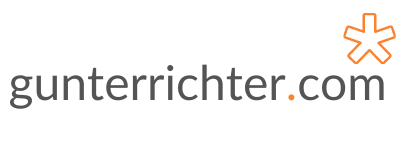It’s not very often, nowadays, that careers follow a straight path. While some of this is by design, much of it occurs by default. This means that career paths are no longer predictable or plannable. Gone are the days, joining a profession and job after high school, university, or college, and seeing this through till the day you retire.
How then, do you ensure a level of stability and security in your career? The secret is, having the mindset of “employable for life” rather than the mindset of “employed for life”. Once you understand this, you are on the right path.
This is closely aligned to the question, “who is responsible for your career?” Your guidance counsellor? Your parents? Your lecturer? Your employer? While these might all have a part to play, the ultimate responsibility falls on your shoulders.
Being employable for life means that you are not hedging all your bets on a single employer or job. There is no longer such a thing as a job for life. Being employable for life means you can move between jobs and roles, employers, or even careers. It means you can start your own business. It means you can make a living, even in a turbulent job market.
It is a little-known fact that 75% of the skills you use in most jobs are transferable to other jobs. So, you must focus on a plan that will help you build these skills. Here is how to get started.
Take stock of your current situation. First and foremost, it is essential to identify what is important to you. What are your core values? Why do you get out of bed in the morning? To this, many would answer, to go to work. Why? To earn money? Why? To pay the bills? Why? To make sure my family is looked after. So, one of your core values is family. There will be others, just work through this approach and keep asking, why. In his book, “Start With Why“, Simon Sinek covers this in excellent detail.
Next, think about your current job or role. Are you being challenged and are you learning new things? What are the skills that you use to get your job done? Now write down the things that you are good at. Write down the things that you are not so good at. Where are the opportunities to improve? Which are the things that are currently a challenge? Get to know yourself. By this, I mean, understand your character traits. Your strengths, your weaknesses.
To help you with this, there are a large number of tests you can take, such as the Gallup CliftonStrengths, Belbin, DISC, etc.
Developing your Unique Selling Proposition. Next, you need to think about what it is that you are going to bring to the party. What is it that people and organisations will pay you for? In other words, what is your unique selling proposition (USP)? What are you better at than others? While this might seem like a difficult question to answer, and rather than thinking about an individual skill, think about this as a collection of skills. For example, you might be an expert in supply chain but there are loads of others who are more experienced. You might also be an expert in the pet industry. Putting these two skills together (and other too) will help you develop your USP.
Think about the skills you have practised and practised, and grown throughout your career. The skills that have helped you transition from role to role. Cal Newport, in his book “So Good They Can’t Ignore You“, calls this your career capital. These are the skills that set you aside from others.
Another exercise is to involve others by asking them this simple question, “What do you think my super-power is?”. You can ask this of friends, family, clients, colleagues, and others.
You should now have a good idea of what it is you can offer the world. Having been through this exercise, you will probably have noticed some gaps. We’ll discuss this in the next section.
Your new skill-set. In the previous step, you defined your USP, and you may well have also highlighted some gaps. This is good because it provides you with an understanding of where you need to focus your attention. Because your USP is, well, unique, so will your gaps be. You need to decide which gaps you think are important to fill and which are not. While some of these might relate to the functional aspects of your existing or desired role, others will be more generic. To become employable for life, these are the skills you should focus on.
- Developing a growth mindset
- Building resilience
- Gaining transferable knowledge
- Being solution-oriented
- Improving your networking ability
- Leading yourself.
These skills are fairly broad but important, so deserve a post of their own. My next blog post will cover these in much more detail.
Branding. There are varying opinions on personal branding. Some suggest it’s a fad, while others suggest it is essential. Don’t believe the former. Believe the later. It is essential. You will have spent some time defining your USP but this will be a waste of time if people don’t know about you. Your personal brand is the way that you get your message and proposition to market, and essentially market yourself.
Think about this in the same way that organisations build their brand, make you aware of it, have you become a fan (ideally) or at least build trust, and ultimately get you to buy from them.
Tom Peters talks a lot about this in his book, “The Brand You 50”, which is well worth a read. In the book, he talks about how jobs, as we know them, are in jeopardy, and if you don’t become distinct, you’ll become extinct. He offers loads of advice on how to build your personal brand.
To get started with building your personal brand, you’ll need to create a headline. Essentially a sentence describing the value that you can add. This needs to be catchy and engaging and convince readers or people you meet to dig a little deeper and learn more about you. Thinking about this in more detail, you now need to create an “elevator pitch”. This is a short description of who you are, what you do, and how it is valuable. Typically described in the time it takes to ride an elevator. Probably anywhere between 30 seconds and two minutes. No pressure!
Finally, you need to consider how you’ll be spreading the message. The classic way is, of course, your CV. This can be shared as it normally would be, however, you’ll need to consider other channels and mediums to communicate your brand. Think about social media such as LinkedIn (essential), Twitter, Pinterest, Instagram, and others. Also, don’t underestimate that value of a personal website or blog, speaking events, networking, and other publications.
Action plan. Now the really important part. Putting all of these bits into an action plan, to make sure that you achieve these outcomes. Using your current situation analysis and your new skill set definition, you’ll be able to work out the difference between these two. Identify the actions that are required to close these gaps. Define what success looks like. Determine a timeline in which you wish to do this. Specify the dependencies or the help you’ll need. There you have it. That is your plan. Keep coming back to this to measure progress and make changes where necessary.


Trackbacks/Pingbacks